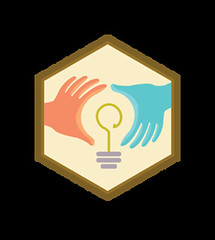Entrepreneur Incubator
Repurposed for BNCs

Introduction
The adapted version of the Entrepreneur Incubator was used during Casa Thomas Jefferson`s Youth Innovation Camp with a group of 40 participants in its second round. Participants were very excited about our camp, for we addressed themes related to innovation, digital skills, and entrepreneurship. We used this lesson with young teens (9 to 12 year olds), so the Smithsonian original material was repurposed to tap into participants needs, interests, and English language proficiency level. This material focuses specifically on the Concept section of the Development Content Pyramid.
See the Repurposed Development Content Pyramid Concept plan online.
Learning aim
Teach participants aspects related to the development part of products and how to make stop motion videos to advertise their products.
Development Content Pyramid CONCEPT
This lesson focuses specifically on the Concept section of the Development Content Pyramid and teaches business fundamentals while challenging participants to create sketches of their original product ideas and/or logos.
LESSON SNAPSHOT:
| TIME NEEDED | SKILLS | TECHNOLOGY | MATERIALS | PROJECT(S) |
| 1.5–2 hours | Brainstorming, innovation, basic design, prototyping, business fundamentals, critical thinking | Google cardboards Data show Projector |
Product charts pencils or pens; writing paper; Large sheets of paper; PPT Markers; Examples of logos, PowerPoint; For stop motion: Lego blocks Colored paper Scissors / play dough | Better understanding of business fundamentals Sketch of an original product and logo. |
Tip for facilitators
Make use of visuals to facilitate understanding. We attribute the success of this lesson to the use of goole cardboards as a lead-in, for participants were curious and willing to explore this amazing Google product as a lead-in. As a result, participants were in the mood of talking about concepts related to product design. We bought the headsets online, and we sent an email to campers to make sure some downloaded googlecardboard apps of our choice to their cell phones.
DETAILED LESSON PLAN:
| VOCABULARY | Characteristic, core audience, demographic, product, logo, innovative, aesthetic, timeless, versatile |
| ACTIVITY OVERVIEW | Participants will complete the chart based on the concept section of the Development Content Pyramid. Working in small groups, they will combine different aspects of actual current businesses to create new, fictitious businesses/products. They will learn fundamental business concepts as demographic, core audience, and location. They will also work individually to create first drafts of product designs and/or logos for their own potential businesses. Participants will share concepts learned by making stop motion videos using mobile devices. |
| LEAD - IN STEP BY STEP |
Have students use Google cardboard and feel the thrill of using this innovative product by Google. Explore the product (Google Cardboard), its innovative features behind the concept of the product, and the brand GOOGLE itself. Analyze demographics, aesthetic, innovative feature, core audience, mission statement, logo, differential. Facilitator should ask questions and elicit answers from the whole group. See suggested PPT to support delivery. 1. Brainstorm (5–10 minutes):
TIPS FOR FACILITATORS:
2. Group Work (15–20 minutes):
3. Design Basics (10–15 minutes):
TIPS FOR FACILITATORS:
4. Sharing. Explore with participants the concept that advertisements can help businesses reach larger audiences. Show some advertising campaigns made in stopmotion. Prompt participants to create their campaigns, storyboard, prepare materials to use for making the video. Make sure you offer varied choice of materials (Lego blocks, play dough, paper, etc.). Monitor participants` work. When the storyboard and materials are ready, show participants how to use stop motion app to make their own videos featuring the product, its name, logo, and innovative feature. |
Vocabulary: CONCEPT
Aesthetic: relating to the enjoyment or study of beauty.
Characteristic: a typical or noticeable quality of someone or something.
Core audience: the group of people who are most likely to buy a particular product, to watch a particular program, etc.
Demographic: a group of people, for example, customers, who are similar in age, social class, etc.
Innovative: using new methods or ideas.
Investment: the act of putting money, effort, time, etc. into something to gain profit or advantage; the money, effort, time, etc. used to do this.
Logo: a design or symbol displayed on a company’s products, marketing materials, etc., that expresses the company’s character and makes it easy to recognize and remember the company.
Product: something that is made to be sold, usually something that is produced by an industrial process or (less commonly) something that is grown or obtained through farming.
Timeless: losing little relevance or value as the years go past.
Unobtrusive: not noticeable; seeming to fit in well with surroundings.
Versatile: able to be used for many different purposes.
Wordmark: a distinct text-only typographic treatment of the name of a company, institution, or product used for purposes of identification.